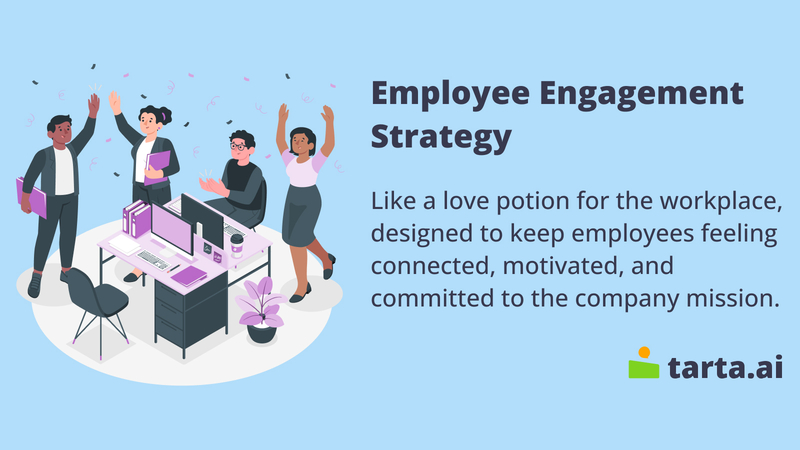The Importance of Developing an Effective Employee Engagement Strategy

Employee engagement refers to the emotional and psychological investment an employee has in their work and the company they work for. It is about creating a workplace culture where employees feel connected to their work, their colleagues, and the organization as a whole. Employee engagement is crucial for organizations to achieve their goals and sustain long-term success.
In this article, we will discuss the importance of developing an effective employee engagement strategy. We will explore the benefits of employee engagement, the key elements of a successful strategy, how to measure and evaluate employee engagement, and provide examples of companies with effective strategies. By the end of this article, you will have a deeper understanding of why employee engagement matters and how to develop a strategy that works for your organization.
Benefits of Employee Engagement
Employee engagement has a wide range of benefits for both employees and the organization as a whole. Here are some of the most important benefits:
- Improved productivity and performance: Engaged employees are more productive and perform better than disengaged employees. They are more committed to their work and go above and beyond what is expected of them.
- Reduced absenteeism and turnover rates: Engaged employees are less likely to miss work or leave the company. They are more satisfied with their jobs and feel a sense of loyalty to the organization.
- Better customer satisfaction: Engaged employees provide better customer service and are more likely to create positive customer experiences. They are invested in the success of the company and strive to make a positive impact.
- Stronger company culture: Engaged employees help to create a positive and supportive work environment. They are more likely to collaborate with their colleagues and contribute to a strong sense of teamwork and community.
Employee engagement has a positive impact on many different aspects of the organization. By investing in employee engagement, companies can improve performance, reduce turnover rates, enhance customer satisfaction, and create a positive company culture.

Developing an Effective Employee Engagement Strategy
Developing an effective employee engagement strategy requires a deep understanding of both the organization's goals and the needs of its employees. Here are some key elements to consider when developing an effective strategy:
- Importance of aligning strategy with company values and goals: Your employee engagement strategy should be aligned with the core values and goals of the organization. This will help to create a sense of purpose and meaning for employees and ensure that everyone is working towards a common goal.
- Understanding employee needs and preferences: It's important to understand what motivates and drives your employees. Conducting surveys or focus groups can help you gather feedback and insights about what your employees value most. This information can be used to shape your employee engagement strategy.
- Creating a two-way communication channel: Employees want to feel heard and valued. Creating a two-way communication channel where employees can provide feedback and ideas can help to build trust and engagement. This can be done through regular check-ins, suggestion boxes, or employee surveys.
- Investing in employee development and recognition: Providing opportunities for employee growth and development is key to engagement. Offering training and development programs, mentorship opportunities, and career advancement can help to keep employees motivated and engaged. Additionally, recognizing and rewarding employee achievements and contributions can help to create a positive work culture.
- Creating a positive work environment and culture: A positive work environment is crucial to engagement. This includes things like offering flexible work arrangements, creating a comfortable and safe physical environment, promoting work-life balance, and fostering a supportive and inclusive workplace culture.
By considering these key elements when developing an employee engagement strategy, organizations can create a plan that is effective, sustainable, and aligned with the needs and values of their employees.
Interesting fact:
Companies with high levels of employee engagement tend to have a more positive employer brand and are more likely to attract top talent.
Measuring and Evaluating Employee Engagement
Measuring and evaluating employee engagement is crucial to ensuring that your engagement strategy is effective and making a positive impact on the organization. Here are some key elements to consider when measuring and evaluating employee engagement:
- Methods for measuring employee engagement: There are a variety of methods for measuring employee engagement, including surveys, focus groups, and one-on-one interviews. Employee engagement surveys are a common tool for measuring engagement, and they can be tailored to fit the specific needs of the organization.
- Benefits of regular evaluation and feedback: Regular evaluation and feedback help to ensure that your engagement strategy is aligned with the needs of your employees and the organization. This allows you to make adjustments to the strategy as needed and to stay responsive to changing needs.
- Importance of adjusting strategies based on results: Once you have gathered data on employee engagement, it's important to analyze the results and make adjustments to the strategy as needed. This may involve implementing new initiatives, adjusting existing programs, or discontinuing programs that are not effective.
By measuring and evaluating employee engagement, organizations can gain valuable insights into what is working and what needs to be improved. This helps to ensure that the engagement strategy is effective, sustainable, and aligned with the needs and values of their employees.

Photo: fauxels/Pexels
Examples of Successful Employee Engagement Strategies
Looking at case studies of companies with effective employee engagement strategies can provide valuable insights into what works and what doesn't. Here are some examples of companies with successful employee engagement strategies:
Google has a reputation for being one of the best places to work, and a large part of that is due to their focus on employee engagement. They offer a variety of perks and benefits, such as free food, on-site gyms, and flexible work arrangements. They also prioritize employee development and career advancement, with opportunities for training and mentorship.
- Southwest Airlines
Southwest Airlines is known for having a strong company culture that is built on the idea of putting employees first. They prioritize employee engagement by offering a variety of benefits and perks, such as profit-sharing, employee stock options, and generous travel benefits. They also have a strong focus on teamwork and collaboration, which helps to create a positive work environment.
- HubSpot
HubSpot is a marketing software company that has a unique approach to employee engagement. They offer a variety of programs and initiatives that are designed to help employees feel supported and valued, such as peer recognition programs, regular feedback and check-ins, and opportunities for growth and development.
Note:
Employee engagement strategies are not one-size-fits-all. Different organizations and teams may require different approaches depending on their culture, size, and industry.
Lessons learned and best practices:
From these examples and others, there are several key lessons and best practices that can be applied to developing an effective employee engagement strategy:
- Prioritize employee development and growth: Offering opportunities for training and career advancement can help employees feel invested in the company and motivated to succeed.
- Create a positive work environment: Offering perks and benefits, promoting work-life balance, and fostering a supportive and inclusive workplace culture can help create a positive work environment.
- Listen to employee feedback: Regularly soliciting employee feedback and taking action based on that feedback can help employees feel valued and heard.
By applying these lessons and best practices, organizations can develop effective employee engagement strategies that create a positive impact on the organization and its employees.

Photo: Brooke Cagle/Unsplash
Employee engagement is crucial to the success of any organization, and developing an effective engagement strategy can have a significant impact on the productivity, performance, and overall success of the organization.
Throughout this article, we have explored the benefits of employee engagement, the key elements of developing an effective engagement strategy, the importance of measuring and evaluating employee engagement, and examples of successful employee engagement strategies.
As we have seen, companies that prioritize employee engagement tend to have better productivity, lower turnover rates, and stronger company cultures. Therefore, it is imperative for companies to make employee engagement a priority and develop effective strategies that are aligned with their values and goals.
- Benefits of employee engagement include improved productivity and performance, reduced absenteeism and turnover rates, better customer satisfaction, and a stronger company culture.
- Key elements of developing an effective employee engagement strategy include aligning the strategy with company values and goals, understanding employee needs and preferences, creating a two-way communication channel, investing in employee development and recognition, and creating a positive work environment and culture.
- Measuring and evaluating employee engagement is crucial to ensuring that your engagement strategy is effective and making a positive impact on the organization.
- Key lessons and best practices for developing effective employee engagement strategies include prioritizing employee development and growth, creating a positive work environment, and listening to employee feedback.
- Companies that prioritize employee engagement tend to have better productivity, lower turnover rates, and stronger company cultures.
FAQ
What are some common mistakes employers make when trying to improve employee engagement?
Some common mistakes employers make when trying to improve employee engagement include not providing enough opportunities for growth and development, failing to communicate effectively, not recognizing employee contributions, and not addressing workplace issues and conflicts in a timely manner.
Can employee engagement be improved in a remote work environment?
Yes, employee engagement can be improved in a remote work environment by offering virtual professional development opportunities, providing regular communication and feedback, recognizing and rewarding employees for their contributions, promoting work-life balance, and fostering a positive virtual work environment.
How important is employee recognition in improving engagement?
Employee recognition is very important in improving engagement because it can help employees feel valued and appreciated for their contributions, which can lead to increased motivation and productivity. Recognition can come in many forms, such as verbal praise, awards, bonuses, or promotions.
How can employers promote diversity, equity, and inclusion as part of their employee engagement strategies?
Employers can promote diversity, equity, and inclusion as part of their employee engagement strategies by creating a workplace culture that values and respects diversity, offering training and education on topics such as unconscious bias, providing equal opportunities for all employees, and regularly measuring and tracking progress towards diversity and inclusion goals.